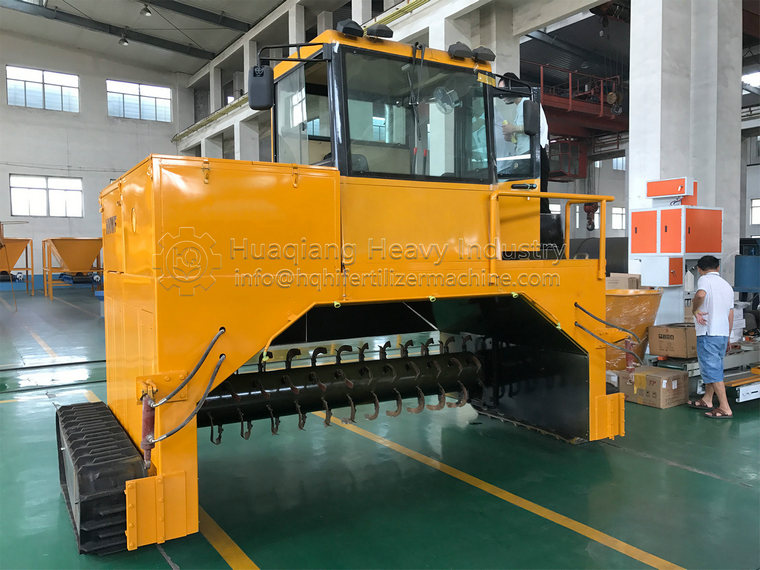There are many types of organic fertilizer production equipment, but the main ones are different functions and yields. Let's take a look at what a complete organic fertilizer production equipment includes.
Fermentation tipping machine: Fermentation tipping machines are also divided into slot type tipping machines and self-propelled tipping machines, mainly used for the fermentation and ripening of raw materials, deodorization and sterilization, and play a role in complete ripening.
Organic fertilizer crusher: Common types of crushers include vertical crushers and semi wet material crushers, mainly used to crush fermented raw materials. The finer the crushing, the higher the success rate of the production, and the more rounded, plump, and beautiful the particles.
Forklift feeding silo: To ensure uninterrupted production, the feeding silo plays a temporary role in storing materials and continuously feeding the production line. It is divided into ordinary feeding machines and uniform feeding feeding machines.
Organic fertilizer mixer: Common types include vertical mixer and horizontal mixer, mainly used for mixing raw materials and auxiliary materials to make the distribution of organic matter more uniform. When adding trace elements such as nitrogen, phosphorus, and potassium, stir thoroughly to make the material more uniform and suitable for stirring common organic fertilizer materials.
Granulators: Common types include roller extrusion granulators, disc granulators, toothed granulators, and drum granulators. The particle state produced by each type of granulator varies, and there are certain requirements for the applicable materials. The variety of granulators can be determined based on the selection of raw materials.
The so-called maturity refers to the particularly important aspect of the production process, which is the maturity. Fertilizer formed by mixing various fresh livestock manure and gasket materials needs to be decomposed into nutrients and humic substances that can be used by crops through the action of microorganisms during the accumulation process. Only in this way can organic fertilizers be suitable for application. In the process of producing fertilizer using organic fertilizer equipment, ripening is a very important step.

The commonly used decomposition methods for raw materials in organic fertilizer production equipment:
1. Tight packing method.
The feces and urine of livestock that come out of the circle are piled up layer by layer in the composting site, and are compacted while being piled up. If it is too dry, an appropriate amount of water can be added to keep it moist. The height of the fertilizer pile should be 1.5 to 2 meters. After the pile is stacked, it should be sealed with soil, and the temperature should generally be kept at 15 ℃ to 35 ℃. With this method, humus accumulates more and nitrogen loss is less. After about three to four months, the organic fertilizer can reach a semi mature state, and can be fully decomposed after more than six months.
2. Loose stacking method.
Loose accumulation of fresh livestock manure and urine in the composting area, and maintain good ventilation during the accumulation process. Under high temperature conditions, livestock manure decomposes quickly and can produce decomposed organic fertilizer in a short period of time.
3. Loose and tight cross stacking method.
Adopting loose and tight alternating stacking can not only shorten the maturation time of organic fertilizers, but also reduce nitrogen loss. Loose and stack fresh organic fertilizer about one meter high outside the circle without compressing it for fermentation. Generally, the temperature inside the fertilizer pile can reach 60 ℃ to 70 ℃ after 2 to 3 days. In the future, fresh organic fertilizer can continue to be piled up layer by layer until it reaches a height of 2 to 2.5 meters. Seal the compost pile with soil to maintain temperature, hinder air entry, and prevent loss of fertilizer and large evaporation of water. Generally, it takes 1 and a half months to 2 months to reach a semi decomposed state, and after 4 months, it can be fully decomposed.